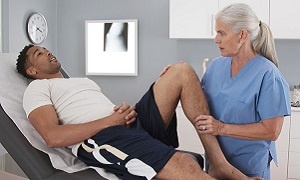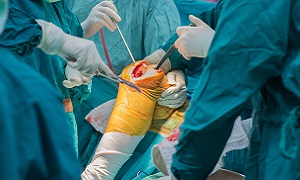What is Arthritis?
Arthritis is a condition when there is tenderness and swelling in one or more joints of your body. Arthritis usually affects the joints like wrists, knees, hips or fingers & can also affect other connective tissues and organs, including your skin.
Causes of Arthritis
- Age- The risk of arthritis increases with age.
- Obesity or over weight
- History of Injury- People who have injured a joint are more likely to develop arthritis in that joint.
- Family History- Having a family history of arthritis.
- Infections- Bacteria, viruses or fungi can infect joints and cause inflammation or arthritis.
Signs & Symptoms of Arthritis
The common signs & symptoms of Arthritis are:
- Pain
- Stiffness
- Swelling
- Redness
- Decreased range of motion
Types of Arthritis
Osteoarthritis
This is the most common form of arthritis. It affects millions of people across the world. When the protective cartilage that acts as a cushion to the ends of the bones wears down with the passage of time, the person suffers from osteoarthritis. It can damage any joint in the body; especially knees, spine, hands and hips are the most affected.
Rheumatoid Arthritis
It is a chronic inflammatory disease affecting more organs than just your joints. It may affect various body systems like the heart, skin, blood vessels, lungs and eyes. It is an autoimmune disorder that occurs when the immune system of your body attacks your own body tissues.
Gout
It is a complex form of arthritis. It can affect anyone and is very common. The patient gets sudden attacks of severe pain, redness, swelling and tenderness in the joints of his/her body. The most affected joint is at the base of the big toe. The patient feels a burning sensation in the big toe on getting an attack of gout. The joint may swell up and becomes very tender.
Ankylosing Spondylitis
Juvenile Idiopathic Arthritis
Formerly known as juvenile rheumatoid arthritis, it most commonly affects children under the age of 16 years. It causes swelling, persistent joint pain and stiffness. While most of the children show symptoms for their entire lives, some children experience the symptoms only for a short period of time.
Reactive Arthritis
Patients suffering from reactive arthritis have swelling and joint pain triggered by an infection in any part of the body like intestines, urinary tract and their genitals. The most commonly affected areas are the joints of ankles & feet and the knee joints. It may also affect your skin, eyes and urethra with inflammation.
Septic Arthritis
A painful infection in a joint is septic arthritis. It can arise from the germs in any part of the body and traveling through your bloodstream. A penetration injury that delivers germs into your joints can also cause septic arthritis. The infection most commonly affects infants and the older age group people. The most commonly affected site is knees followed by hips, shoulders and other joints. The cartilage and bone within the joint are the worst affected due to the infection.
Psoriatic Arthritis
This form of arthritis affects people suffering from psoriasis. Psoriasis is a condition where silvery scales top the red patches of skin. Many people diagnosed with psoriasis later come to know that it is psoriatic arthritis. Sometimes, joint problems start appearing before skin patches.
Thumb Arthritis
It occurs when the cartilage from both the ends of the bones forming the joint at the base of the thumb (also called carpometacarpal joint) wears away. The condition is common with aging. It can cause swelling, decreased strength & range of motion, severe pain and difficulty in performing simpler tasks
Diagnosis of Arthritis
- Physical examination is done to check for tenderness, swelling, redness, warmth and loss of motion in the joints.
- Your orthopedics will ask for medical and family history.
- Joint fluid samples are collected & examined.
- X-rays
- MRI
Arthritis Treatment
Treatment of Arthritis focuses to reduce pain & joint damage and maintain function and quality of life. The treatment includes:
Medication
- Disease-modifying antirheumatic drugs (DMARDs) are used to treat rheumatoid arthritis. These drugs slow or stop the immune system from attacking the joints.
- Biologics are used with DMARDs- These drugs are genetically engineered drugs that target the protein molecules involved in the immune response.
- Corticosteroids reduce inflammation and suppress the immune system
Self-management
Physical therapy
Surgery
Surgery includes:
- Joint repair-Joint surfaces can be realigned to reduce pain and improve function.
- Joint replacement- This includes removal of damaged joint and replacing it with an artificial one.
- Joint fusion- This includes removal of the ends of the two bones in the joint and locking the ends together until they heal into one rigid unit. Commonly used for smaller joints, such as those in the wrist, ankle and fingers





